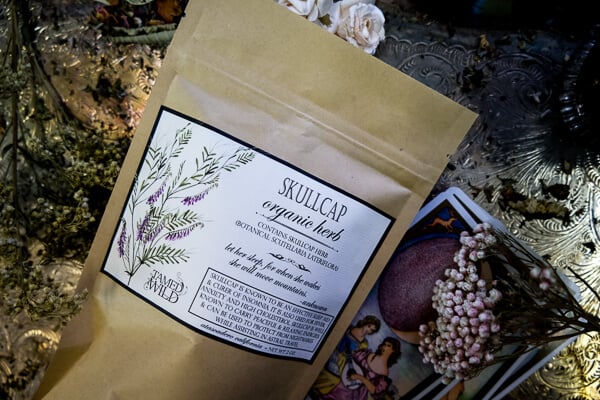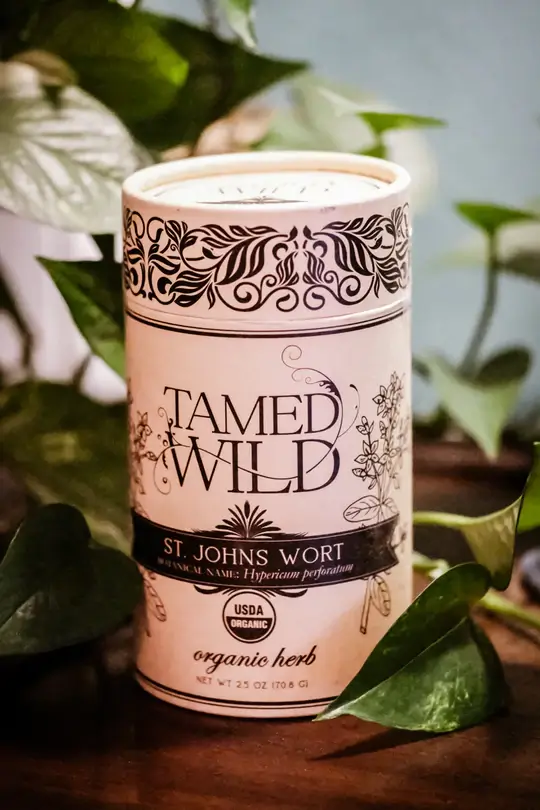A cross between Watermint and Spearmint, Peppermint is an aromatic herb from the mint family. With a square stem, its leaves are dark green with reddish veins and a light fuzz. Purple flowers grow around the stem and it can grow up to 35 inches tall. The leaves of peppermint are used in tinctures, tea, cooking, baking, and magickal practices. Indigenous to Europe and the Middle East, the plant is now widely spread and cultivated in many regions of the world.
Magickal Lore
The genus Mentha gets its name from the Greek Mintha or Minthe, who was a nymph who attempted to seduce Hades. Persephone, Hades’ wife, became enraged with jealousy and turned Minthe into a plant that people would constantly walk on. Hades, unable to reverse the spell Persephone had casted, imbued the plant with peppermint. This way, any man that tread upon her would smell the enticing, sweet aroma, and remember Minthe and all of her beauty. For this reason, mint is often used in love spells. Moreover, mint became strongly associated with Hades and was used in funerary rites, mainly to cover up the smell of a body and as a way to connect with the Underworld.
Peppermint has been used since ancient times for not only its therapeutic qualities, but magickal qualities as well. Dried peppermint leaves have been found in Egyptian pyramids and was also valued by the ancient Greeks and Romans.
In Greece, soldiers were warned not to wear crowns of mint because it was said to increase lust, and therefore, would become a distraction. However, those not serving in the war often wore it as a good luck charm for their love lives.
Associated with the element of air, the planet Venus, and the zodiac signs Virgo and Aquarius, Peppermint is a powerful herb that has many magickal uses. This leafy herb is used in purification rituals, and is a regular ingredient in prosperity, abundance and other rituals focused on financial gain. Peppermint can also be used in spellwork related to happiness, luck, love, protection, health, release, and psychic development.
It is strongly associated with abundance due to its prolific nature. Its bright green leaves resemble money and can be placed in a wallet, purse, or cash register to bring abundance to one’s life. It can be used in prosperity sachets and spells to welcome in more money. Mint is also used in spells for healing, travel, success, and transformation. It has been used in rituals for exorcism, cleansing, dreams, divination, and may be left as offerings to spirit guides.
Healing Properties & Other Uses
Peppermint tea is often drunk for its flavor, but the tea and the plant itself are said to also have many health benefits. Due to its volatile oil content, peppermint is traditionally used as a digestive aid and remedy for upset stomachs, nausea, bowel syndromes, flatulence, and indigestions. Its leaves contain several essential oils including menthol, menthone, and limonene.
Menthol is what gives peppermint its cooling properties and recognizably minty scent. These properties are often used to sooth symptoms associated with the common cold since menthol is known to be an effective decongestant. Decongestants shrink the swollen membranes in the nose, making it easier to breathe and can aid in clearing clogged sinuses. Additionally, Menthol is an expectorant. Expectorants loosen and bring up mucus from the lungs, and are known to soothe a cough.
According to Healthline.com, peppermint can not only ease digestive issues and sinus congestion, but evidence has shown it may alleviate headache pain, improve energy and daytime fatigue, sooth menstrual cramps, and help improve your ability to focus and concentrate. It has also been used for calming skin irritation and itchiness, as well as reducing redness. Studies have shown its effectiveness in the treatment of a tension headaches and its ability to have relaxation effecting that can sooth aching muscles.
Peppermint is commonly used in baking and cooking, and is used to flavor breath mints, candies, and other foods. It is also used as a flavoring herb in toothpaste, mouthwashes, cosmetics, and soaps.
** While we have provided suggestions on how to use the versatile, magickal herb of Peppermint, please keep in mind results may vary per individual and always use caution when trying a new herb. Enjoy our peppermint recommendations and folklore, and perhaps explore your own ways to incorporate it into your daily and magickal lives!**








